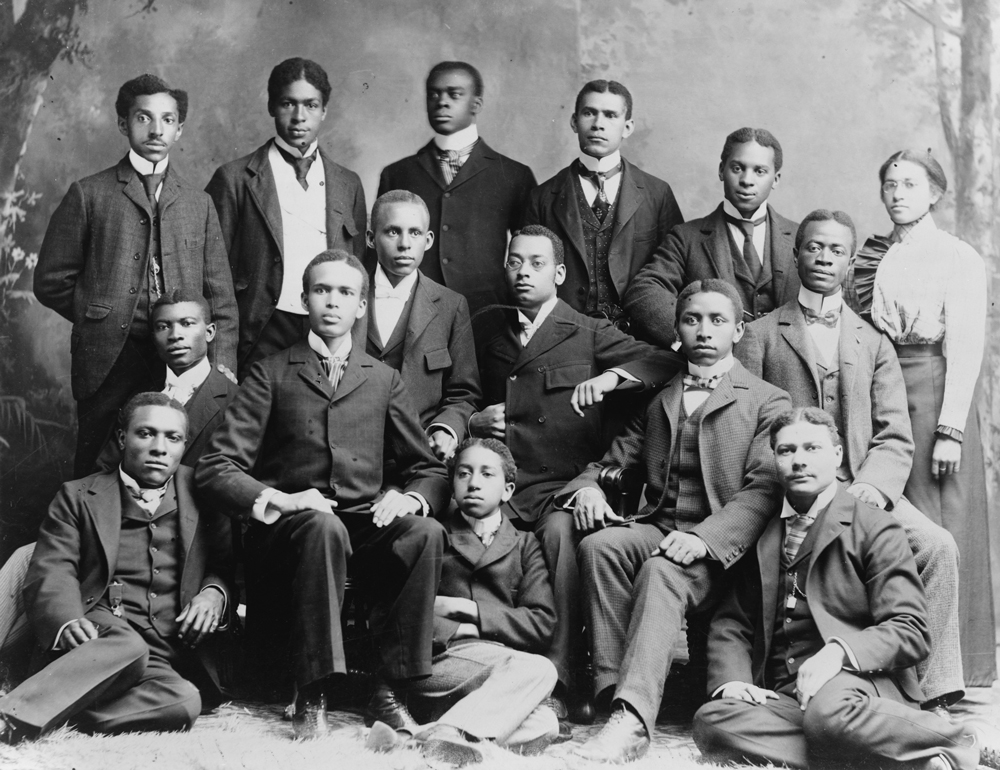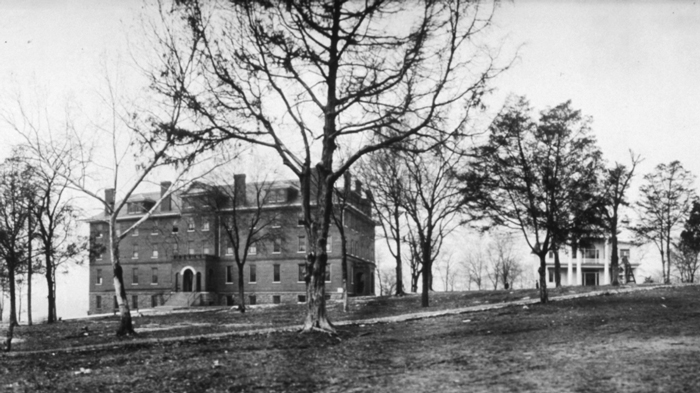By Jalen Blue, MPP’18

Looking across the long stretch of the Peabody mall with its historic buildings and the iconic dome of the Wyatt Center, one might think Peabody College was the only academic institution to have been built on this location. However, before Peabody, the land was home to one of the most prominent black universities in the South, Roger Williams University.
Black colleges and universities have played and continue to play a critical role in American culture and society. These institutions, many of which were established in the mid to late 1800s, were some of the few schools to provide access to educational advancement for African Americans, especially for those living in the South after the Civil War. One of the larger schools established for blacks during this period was a Baptist college, Nashville Normal and Theological Institute.
The institute was founded by Daniel W. Phillips, a Baptist minister who was pastor of the white Central Baptist Church. It offered classes for black ministers taught by Phillips in his home. As the classes grew, they moved to the basement of the black First Baptist Church in Nashville. Then, in 1867, under the name Nashville Normal and Theological Institute, the school opened a location near the corner of Park and Polk streets. Phillips strongly considered expanding to a nearby site as the number of students increased. However, Fisk University acquired the land before the school could buy it.
Instead, the institute identified the 30-acre estate of William H. Gordon as a viable alternative. It was located a little more than a mile from downtown Nashville, situated between Vanderbilt University, which had been founded the year before, and the Belmont Mansion, which today is a centerpiece of Belmont University. The Nashville Institute purchased the land and moved the school to the Hillsboro Pike location in 1874. In 1982 an article by the late Eugene TeSelle, Oberlin Alumni Professor of Church History and Theology, Emeritus, in the Tennessee Historical Quarterly, described the two-story Gordon home, “which came to be called Mansion House”: It “had been built in the 1850s on the hilltop where the Social-Religious Building [today called the Wyatt Center] of Peabody College now stands.”
The school thrived at the new campus, expanding several facilities on the site for classroom and residential spaces. In 1882 it incorporated as a degree-granting university and was renamed for Roger Williams, the founder of Rhode Island and a theologian and abolitionist who also founded the First Baptist Church of America.

In the 1890s, some leaders suggested creating a new national university for black Baptists on the campus, moving Roger Williams University to a new location. In March 1891, in an effort to fight this proposal, many from the black community, including black churches, voted to ask the executive board not to sell the campus. A real estate agent offered a six-month option on the land for $150,000 if he could identify another property that fit the school’s needs. TeSelle described the outcome: “In June the Board named its terms: $225,000, plus a satisfactory replacement site worth not less than $25,000, and all this to be accomplished within 90 days. The terms were not met, and the Board had to live with the suspicions that had been aroused in the black community. It was obvious that residential growth was moving around the Roger Williams campus, and efforts were being made to relocate the institution, especially if black participation in its governance were to be increased.”
Several years later, two suspicious fires on campus led the board to reconsider a move. The first, on the night of Jan. 24, 1905, burned Centennial Hall, the main building at the university, to the ground. The Nashville Daily American, a precursor of The Tennessean, described the event:
“The fire started in the garret near the center of the main building just as the regular evening prayer-meeting began at 7 o’clock, and in a few minutes the entire roof was in flames. The 225 students attending the school, about 80 of whom were girls, had assembled on the fourth floor of the building, and at the first alarm a fearful stampede occurred and it was remarkable that all escaped without serious injury. The screams of the girls and the calls for help by the 140 boys was [sic] distinctly heard all over West End.”
With the main building gone, there was not sufficient space for all the university’s activities. It was decided that the university would try to rebuild and use temporary facilities in the interim, even though opportunities to sell the property did arise.
However, on May 22, 1905, another fire destroyed Mansion House. The cause of the second fire remained shrouded in mystery, as some in the dormitory mentioned hearing “a loud noise from the first floor as if someone was falling over furniture” moments before the fire began.
Recognizing the high costs and difficulty of rebuilding the campus, the board decided to move the school. The campus was divided and put up for sale, with many of the lots having a then-standard deed restriction that the property could not be conveyed to “any person of African blood or descent.”
Roger Williams University reopened in 1908 at a new property on Whites Creek Pike near the Cumberland River. Financial challenges eventually led to its closure and, in 1929, the faculty and students from Roger Williams merged with the Howe Institute in Memphis; Howe merged with LeMoyne (now Lemoyne–Owen) College in 1937. American Baptist College today occupies the former Roger Williams University campus on Whites Creek Pike.
In October 1910, about five years after Roger Williams University moved, George Peabody College for Teachers, which had been located downtown on Rutledge Hill, decided to purchase 25 acres of the former Roger Williams University property on Hillsboro Pike.
Christopher Loss, associate professor of history and associate professor of public policy and higher education at Peabody College, notes that the societal context in America at the turn of the 20th century is also an important factor to consider when looking at the struggles Roger Williams University faced.
“The fall of Roger Williams coincided with the rise of legal segregation, or Jim Crow, in the South,” Loss says. “It also coincided with the spread of the Ku Klux Klan [founded in Pulaski, Tennessee, south of Nashville, in 1865] and lynching across the United States.”
Today the only indications that an important black university once stood on the grounds are two historical markers describing the history of Roger Williams University, one to the side of the Wyatt Center where the university’s main building once stood, and another on Hillsboro Pike near the pedestrian bridge.
Jalen Blue, MPP’18, is the communications relationship manager for equity, diversity and inclusion in Vanderbilt’s Division of Communications.